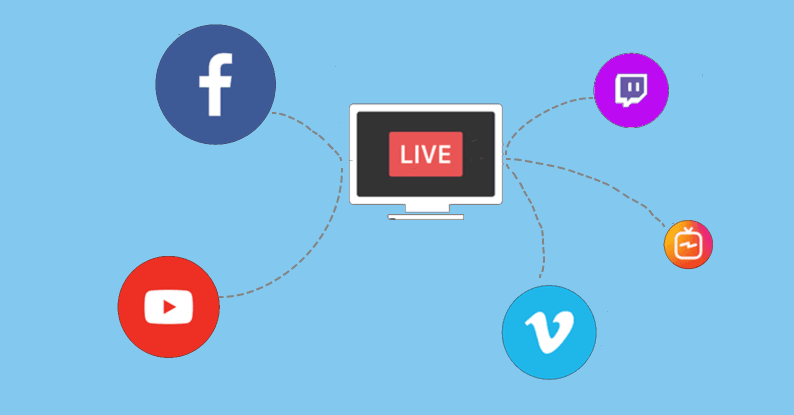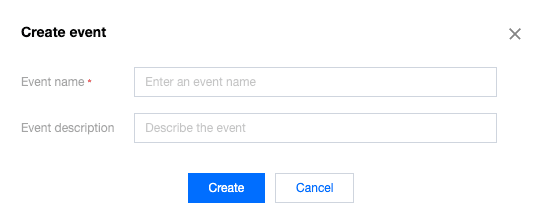How to Transport MultiStreaming: A Comprehensive Guide Introduction
MultiStreaming allows content creators to reach a wider audience and maximize their online presence. In today's digital age, multistreaming has become increasingly important for the modern live-streaming ecosystem, as it enables businesses, influencers, and organizations to engage with their target audience more effectively and efficiently. This comprehensive guide will discuss the concept of multistreaming, its benefits, and the best practices for transporting and managing multiple live streams to ensure a seamless and high-quality viewing experience for your audience.
What is MultiStreaming?
MultiStreaming, also known as multi-platform streaming, refers to the broadcasting of live content on more than one platform simultaneously. This could include social media platforms like Facebook, YouTube, Instagram, and Twitch. The streamed content could range from a live event, a webinar, a product launch, or any other form of live content.

The applications of multistreaming are vast and varied. Businesses use it to maximize their reach during product launches, conferences, and webinars. Influencers and content creators use it to engage with their audience across various platforms, thus expanding their follower base. News and media outlets use it to broadcast breaking news and live events to their audiences on multiple platforms. Educational institutions use it to conduct online classes and lectures. Non-profit organizations use it to stream fundraisers and awareness campaigns. The possibilities are endless.
There are several benefits of multistreaming. Firstly, it allows for a broader reach. By broadcasting on multiple platforms, you can engage with audiences who may prefer one platform over another. Secondly, it provides redundancy. If one platform experiences technical difficulties, the stream continues on the other platforms, ensuring your content is always accessible. Thirdly, it allows for increased engagement. Different platforms offer different features for interaction, allowing you to engage with your audience in diverse ways. Lastly, it can lead to increased revenue. More views across multiple platforms can lead to higher ad revenue, sponsorships, and monetization opportunities.
Essential Technologies for MultiStreaming
To successfully transport multistreaming, there are several key technologies involved.
- Encoding and Transcoding: Before streaming, the raw video and audio content must be compressed and converted into a digital format that can be easily transmitted over the internet. This process is called encoding. Transcoding, on the other hand, involves converting an already encoded video into different formats, resolutions, or bitrates to ensure compatibility with various devices and platforms.
- HLS (HTTP Live Streaming) and DASH (Dynamic Adaptive Streaming over HTTP): These are two popular adaptive streaming protocols that enable the delivery of high-quality video content over the internet. Both protocols work by breaking the video content into small chunks and adjusting the quality of the video in real-time based on the viewer's internet connection and device capabilities. This ensures a smooth and uninterrupted streaming experience.
- CDN (Content Delivery Network): A CDN is a network of servers distributed across multiple locations around the world. Its primary function is to cache and deliver content, including live streams, to users from a server that is geographically closer to them. This reduces the latency and buffering issues that can occur when streaming content over long distances. CDNs play a crucial role in delivering multi-live-streaming content by ensuring fast and reliable delivery to viewers on different platforms and devices.
- Streaming Protocols: In addition to HLS and DASH, other streaming protocols such as RTMP (Real-Time Messaging Protocol) and WebRTC (Web Real-Time Communication) are used to transport live streams. These protocols help establish and maintain a connection between the streaming server and the viewer's device, ensuring the efficient delivery of video content.
- Multi-Bitrate Streaming: To ensure compatibility with various devices and internet connections, multi-live-streaming often involves streaming the content in multiple bitrates. This allows viewers with slower connections to watch a lower-quality version of the stream without buffering, while viewers with faster connections can enjoy a higher-quality stream.
In summary, the key technologies behind multistreaming include encoding, transcoding, adaptive streaming protocols such as HLS and DASH, CDN, streaming protocols like RTMP and WebRTC, and multi-bitrate streaming. These technologies work together to ensure a seamless, high-quality streaming experience for viewers across multiple platforms and devices.
How to Multistream?
1. Choose an Online Video Platform
Select the platforms where you want to broadcast your live content. Popular platforms include Facebook, YouTube, Twitch, and TikTok. Each platform has its requirements, limitations, and features, so it's essential to choose the ones that align with your target audience and content strategy.
2. Choosing a MultiStreaming Tool
To stream your content to multiple platforms simultaneously, you need a multistreaming tool or service. Tencent MPS Stream is a live streaming service provided by Tencent Cloud, which offers a reliable and scalable solution for multistreaming.
To use Tencent MPS Stream for multistreaming, follow these steps:
- Create a flow event: In the Tencent MPS Stream Console, create a new live streaming flow event by providing the necessary information, such as event name and description.

- Create flow: To enable multistreaming, you first need to add flow in your live streaming flow event channel. You can create multiple flows in this event. The information required to create a flow includes name, max bandwidth, and region.
- Configure multistreaming: To enable multistreaming, you need to add multiple "Input/Output" in every live streaming flow configuration. Each input/output group represents a different platform or destination where you want to stream your content. For each input/output group, provide the necessary information, such as the streaming protocol, destination URL, and stream key, which you can obtain from the target platform.
- Set up your streaming software: Configure your streaming software (e.g., OBS, Wirecast, or vMix) to use Tencent MPS Stream as the streaming server. In the streaming software, set the "Server" or "URL" field to the RTMP push URL provided by Tencent MPS Stream, and enter the stream key associated with your live streaming event channel.
- Start flow: Once your streaming software is set up, start streaming your content to Tencent MPS Stream. The service will automatically distribute your stream to multi-output you configured earlier.
- Monitor your streams: Tencent MPS Stream provides a real-time monitoring feature that allows you to check the status of your streams on different platforms. Use this feature to ensure that your content is being delivered smoothly across all platforms.
By following these steps, you can successfully use Tencent MPS Stream to deliver multistreaming content to your audience on various platforms. Keep in mind that each platform may have its requirements and limitations, so it's essential to test your setup and monitor your streams to ensure a seamless streaming experience.
Conclusion
Tencent MPS Stream provides an effective and comprehensive solution for multistreaming scenarios. With its robust infrastructure and advanced features, it enables broadcasters to deliver high-quality live content to multiple platforms simultaneously, maximizing their reach and audience engagement.
You are welcome to Contact Us for more information.
